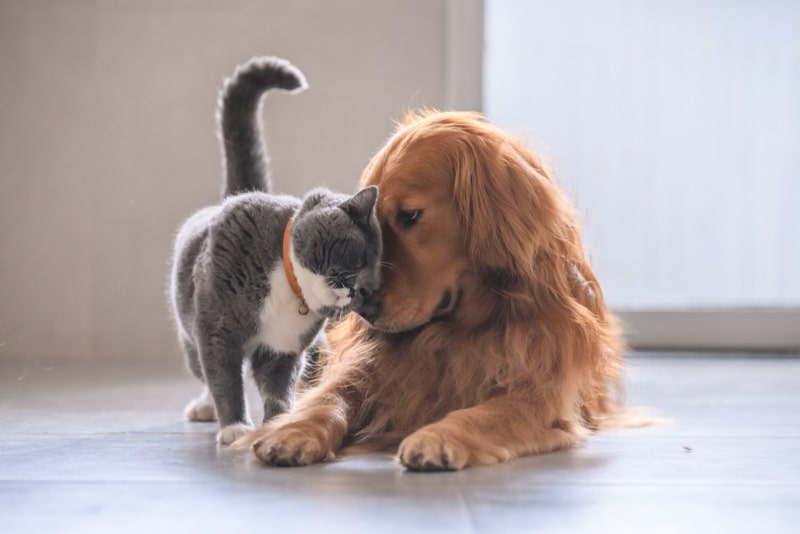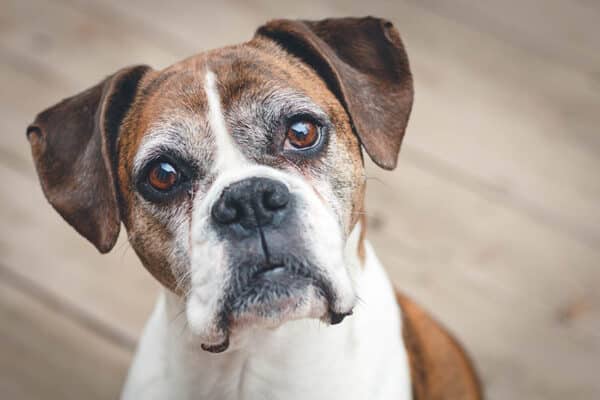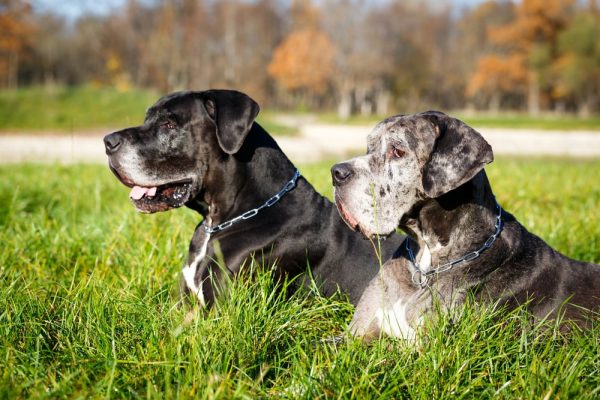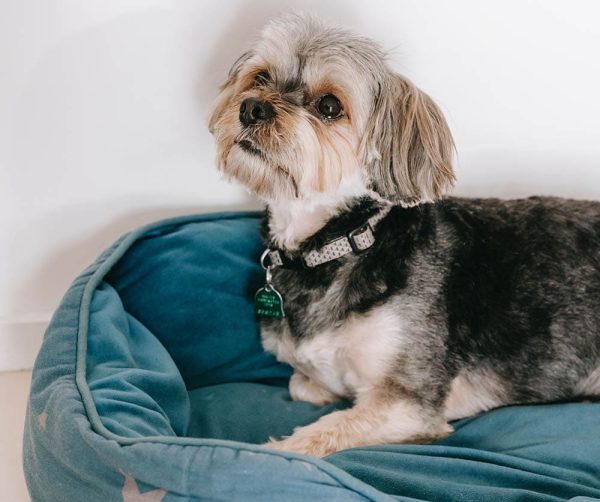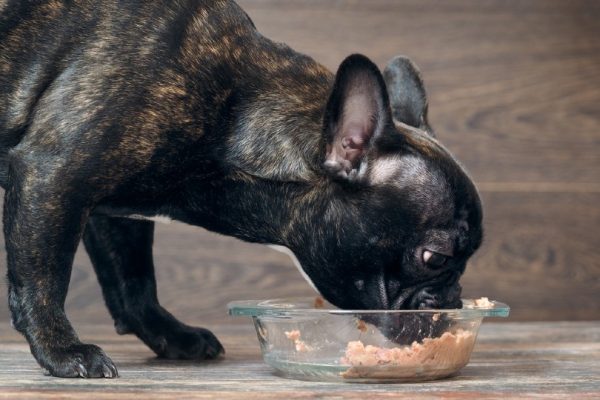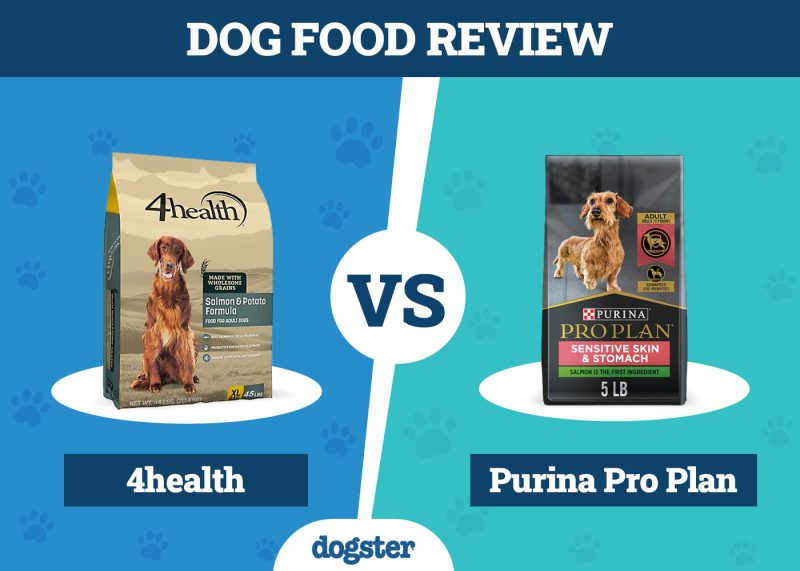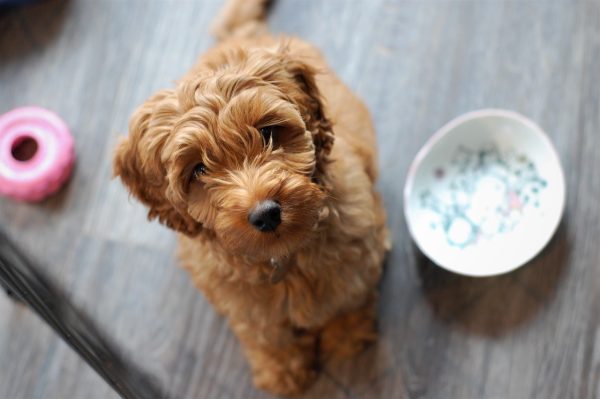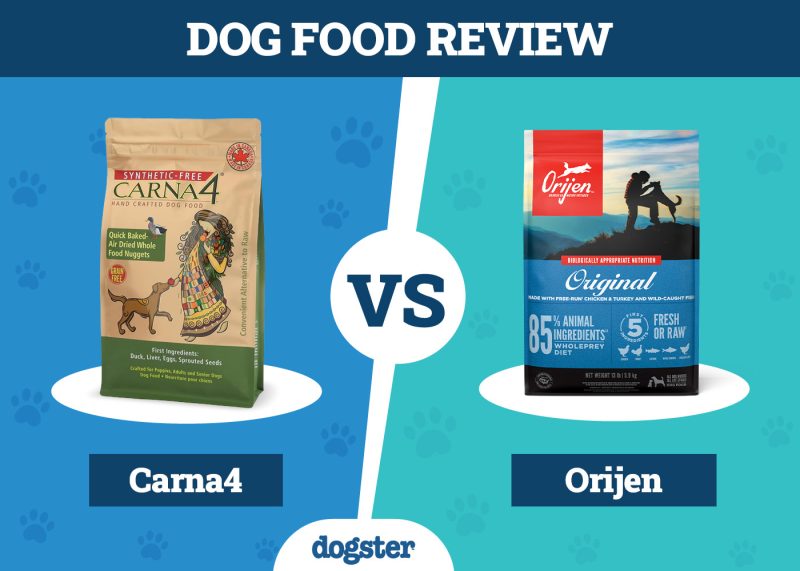Dogs and cats are stereotypically enemies. However, several dog breeds get along with cats. Often, they were bred to be companions and don’t have a significant prey drive. Therefore, they aren’t going to chase cats quite as much as other breeds.
Still, socialization is important with any breed, and dogs that grow up around cats tend to chase them the least. In this article, we’ll examine the canines that are good with cats.

The 20 Dogs That Are Good with Cats
1. Golden Retriever

| Origin: | Scotland |
| Lifespan: | 10–12 years |
| Height: | 21–24 inches |
Golden Retrievers are known for being incredibly friendly. In fact, they are one of the friendliest breeds around. Their friendliness also extends to cats, especially when they are well-socialized. Goldens are also very intelligent and eager to please. They’re exceptionally easy to train, making them a good choice for new dog owners.
2. Labrador Retrievers
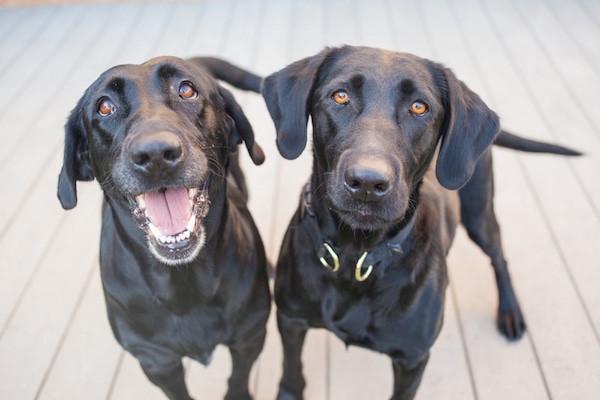
| Origin: | Canada |
| Lifespan: | 10–12 years |
| Height: | 21–24 inches |
Labradors are also friendly pups, though maybe not quite as affectionate as Golden Retrievers. They get along with cats when properly socialized, but some may chase cats more than others. It’s important to socialize your dog with cats from an early age.
Labs require plenty of exercise and thrive with more active families.
3. Beagles
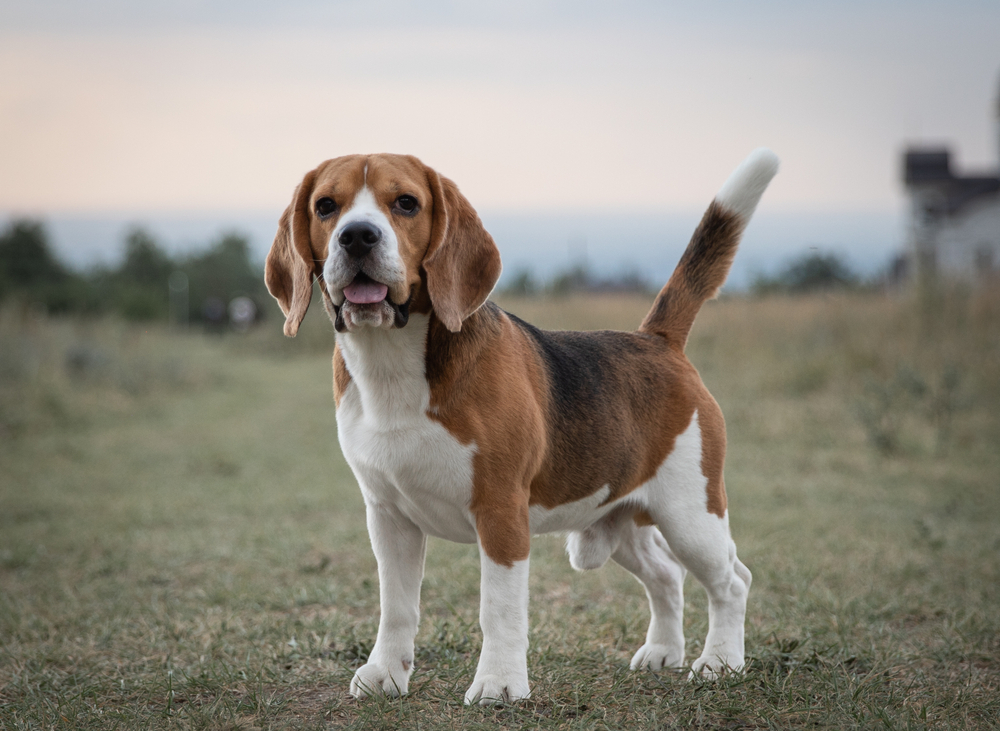
| Origin: | England |
| Lifespan: | 10–15 years |
| Height: | 13–15 inches |
Despite being hunting dogs, Beagles don’t have much of a chase instinct. Instead, they’re incredibly social and get along with just about everyone. When socialized with cats, they can become lifelong friends.
Plus, they’re a very manageable size. Beagles can be as small as 12 inches at the shoulder, though some are larger.
4. Pug
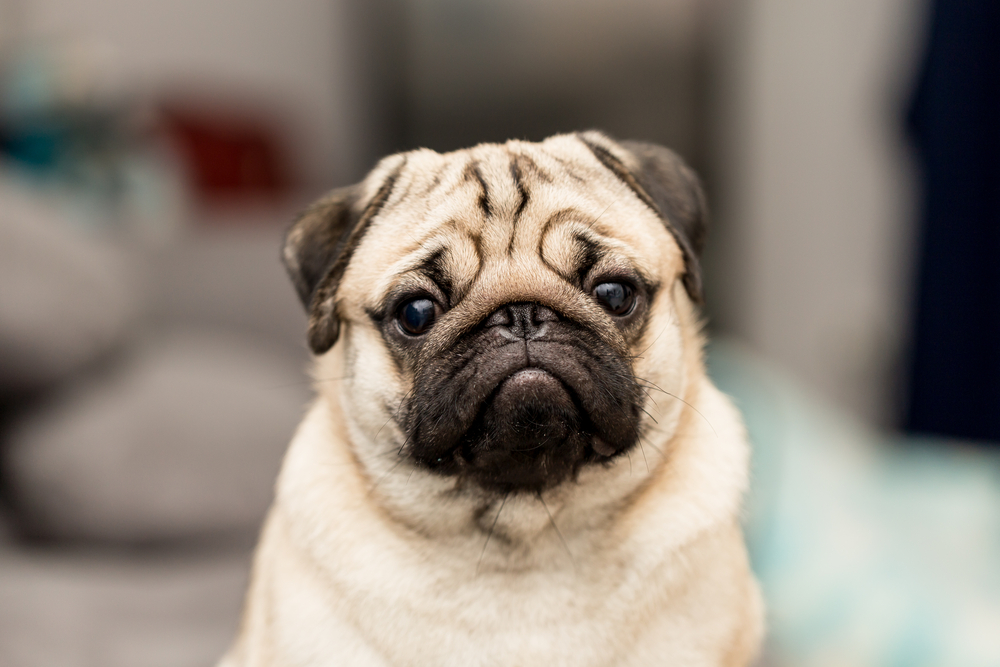
| Origin: | China |
| Lifespan: | 12–15 years |
| Height: | 10–13 inches |
Pugs are very adorable and bred to be companion dogs. They aren’t very active and spend most of their time sleeping. They are also exceptionally easygoing, which allows them to get along with cats.
Pugs are small and generally affectionate. They are ideal for apartment dwellers, and they’re suitable for first-time owners.
5. Bichon Frise

| Origin: | Tenerife |
| Lifespan: | 14–15 years |
| Height: | 9–11 inches |
The Bichon Frise isn’t incredibly popular. However, they can be wonderful companion animals. They’re people-oriented and love to follow their people around. They also get along well with cats and other dogs.
Bichon Frises don’t shed very much but need quite a bit of grooming and trimming. Therefore, we only recommend them for those who have plenty of time on their hands.
6. Cavalier King Charles Spaniel
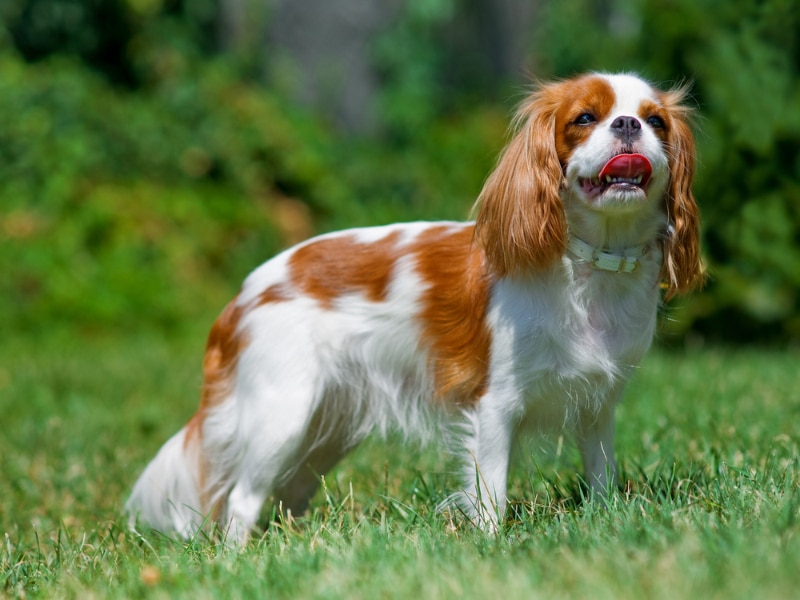
| Origin: | England |
| Lifespan: | 9–14 years |
| Height: | 12–13 inches |
Cavalier King Charles Spaniels are very people-oriented dogs that are exceptionally good with cats and other dogs. They are a bit more active than most other small breeds but gentle and laid-back. A few daily walks around the block and indoor play sessions are often exercise for Cavalier King Charles Spaniels.
Because they are relatively small, they also do well in smaller homes.
7. Shih Tzu
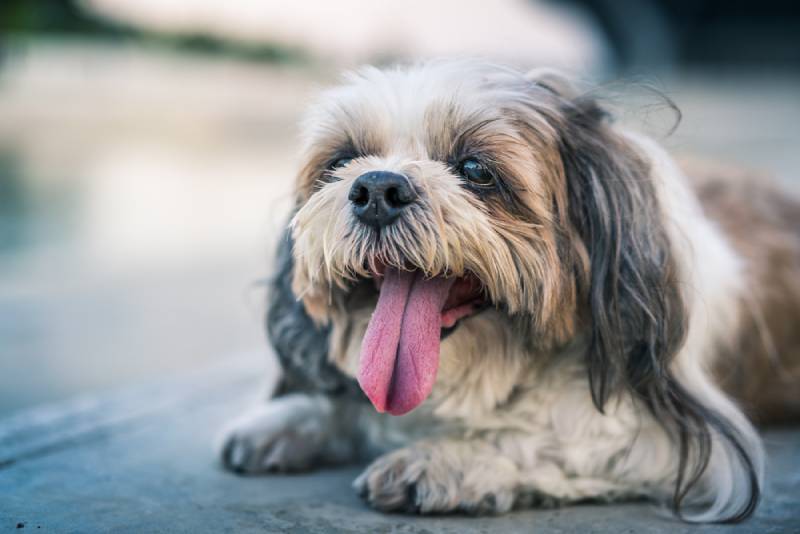
| Origin: | China |
| Lifespan: | 10–18 years |
| Height: | 8–11 inches |
Shih Tzus get along with most cats and dogs, especially if they are well-socialized. They are very laid-back, which allows them to get along with cats relatively easily. They aren’t very energetic and can adapt to apartments and small homes. Their flowing hair is a huge draw but requires frequent grooming.
8. Bulldog
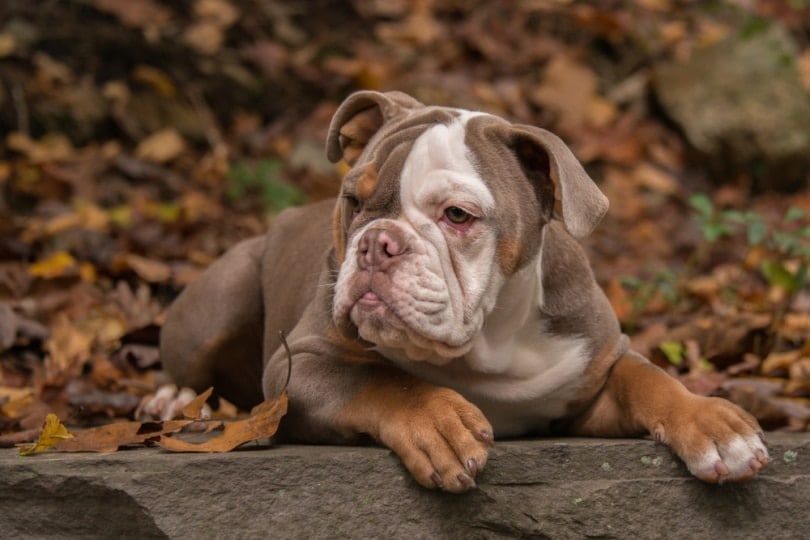
| Origin: | England |
| Lifespan: | 8–11 years |
| Height: | 14–15 inches |
Bulldogs may look tough, but they are surprisingly gentle. They are calm, friendly dogs who get along well with just about anyone. They dont’ need much exercise and are an excellent option for more sedentary families. They’re exceptionally gentle with cats, too, allowing them to thrive in multi-pet households.
However, socialization is crucial since they can be aloof and less accepting of cats without it.
9. Basset Hound

| Origin: | France |
| Lifespan: | 10–13 years |
| Height: | 11–14 inches |
Basset Hounds are stereotypically very laid-back. They’re also very accepting of cats, and their smaller size makes them much more manageable. We highly recommend them for less active owners.
However, their long backs are prone to injuries, and they may get more ear infections than other dogs. We don’t necessarily think they’re suitable for small children since kids can accidentally hurt their backs.
10. Yorkshire Terrier
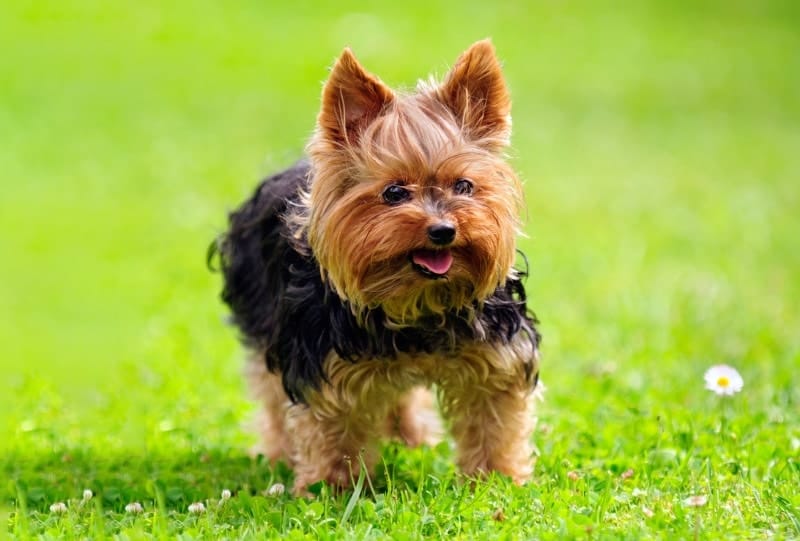
| Origin: | England |
| Lifespan: | 13–16 years |
| Height: | 7–9 inches |
Yorkies are some of the smallest dogs around. Therefore, they work great for families in apartments or with smaller homes. Because they’re so small, they’re also prone to injuries. Therefore, we don’t recommend them in homes with small children. Clumsy toddlers and small Yorkies don’t get along well.
Surprisingly, Yorkies are more active than many people believe. Their small size does make them pretty easy to exercise, and although they love playing outside, they also enjoy indoor play sessions.
11. Maltese

| Origin: | Malta |
| Lifespan: | 12–15 years |
| Height: | 8–10 inches |
The fuzzy Maltese is very similar to the Shih Tzu. However, they have a slightly different temperament. They have long fur like a Shih Tzu, which requires intensive grooming. Luckily, you can get their fur trimmed short to reduce grooming requirements.
Maltese dogs are known for their loving nature. They are very people-oriented but also get along with felines. They don’t have a strong prey drive, but we still recommend plenty of socialization.
12. Boston Terrier
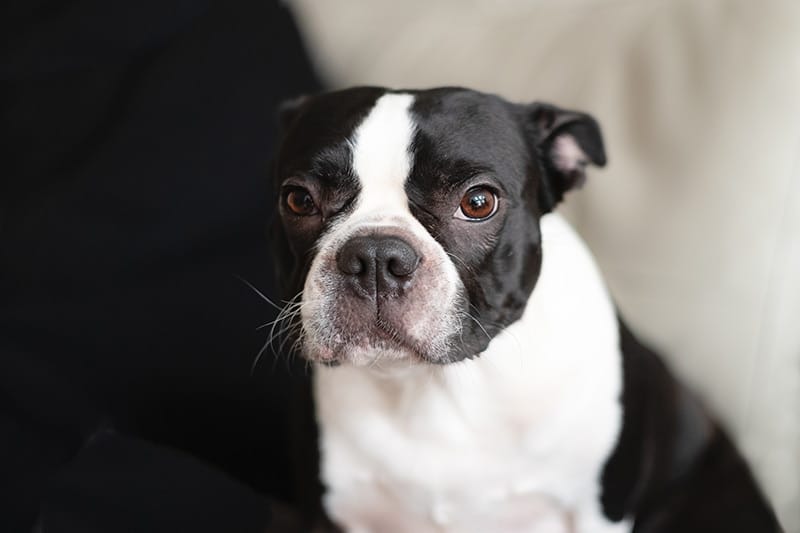
| Origin: | United States |
| Lifespan: | 7–11 years |
| Height: | 15–17 inches |
Boston Terriers are one of the few American breeds. As their name suggests, they were developed around Boston. They’re companion dogs and are exceptionally affectionate. They’re incredibly energetic and suited for more active families.
However, they are much less active than larger dogs. Therefore, if you give them enough exercise, they can still work well in apartments and small living spaces.
13. Papillon

| Origin: | France |
| Lifespan: | 14–16 years |
| Height: | 8–11 inches |
Papillons may look small and fragile but are exceptionally sturdy. They have butterfly-shaped ears, which is how they got their name. Papillons are people-oriented, so they’re very cuddly and tend to follow their humans around the house.
They also get along well with cats and other dogs, especially when well-socialized.
14. Dachshund

| Origin: | Germany |
| Lifespan: | 12–16 years |
| Height: | 8–9 inches |
Dachshunds are hounds but can get along well with cats when well-socialized. They are also pretty small, and some cats are larger than them. Therefore, they don’t see cats as prey animals. However, they’re vulnerable to several health issues. Their long backs are susceptible to injuries, which can potentially cause paralysis. Although Dachshunds live long lives, maintaining regular veterinary appointments is vital to catch chronic or acute issues early.
Keep in mind that some Dachshunds don’t get along with cats. It depends on their breeding and socialization. Therefore, be sure to choose a quality breeder and socialize your dog well.
15. Collies

| Origin: | Scotland |
| Lifespan: | 12–15 years |
| Height: | 22–26 inches |
Collies are herding dogs, but they can get along well with cats, especially when they are well-socialized. They adore children, too, and are commonly considered one of the best family dogs around.
However, Collies are athletic and best suited for more active families. Some may chase cats in a playful manner, but proper training and socialization can tame this behavior.
16. Newfoundland
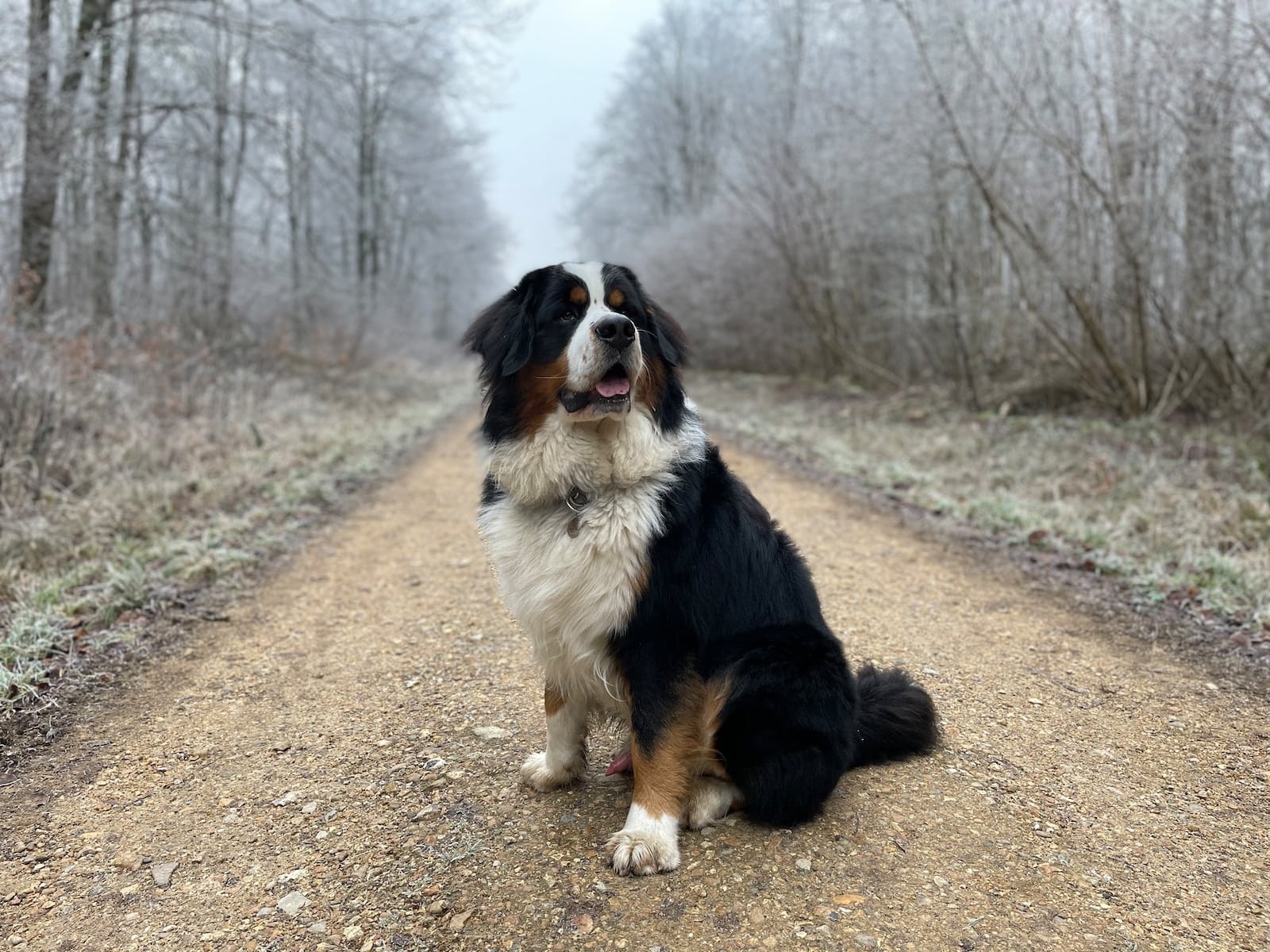
| Origin: | Canada |
| Lifespan: | 8–10 years |
| Height: | 26–28 inches |
These massive dogs are known for their long naps and calm nature. They’re nicknamed “rug dogs” because they spend much of their time lying around, like a rug. Their low activity level moves “chasing cats” to the bottom of their to-do list. When well socialized, they’re more likely to see cats as family members than prey animals.
However, Newfoundlands are massive canines. Their large size can be intimidating to some cats, and it may take a while for them to warm up to the big dogs.
17. Bernese Mountain Dog
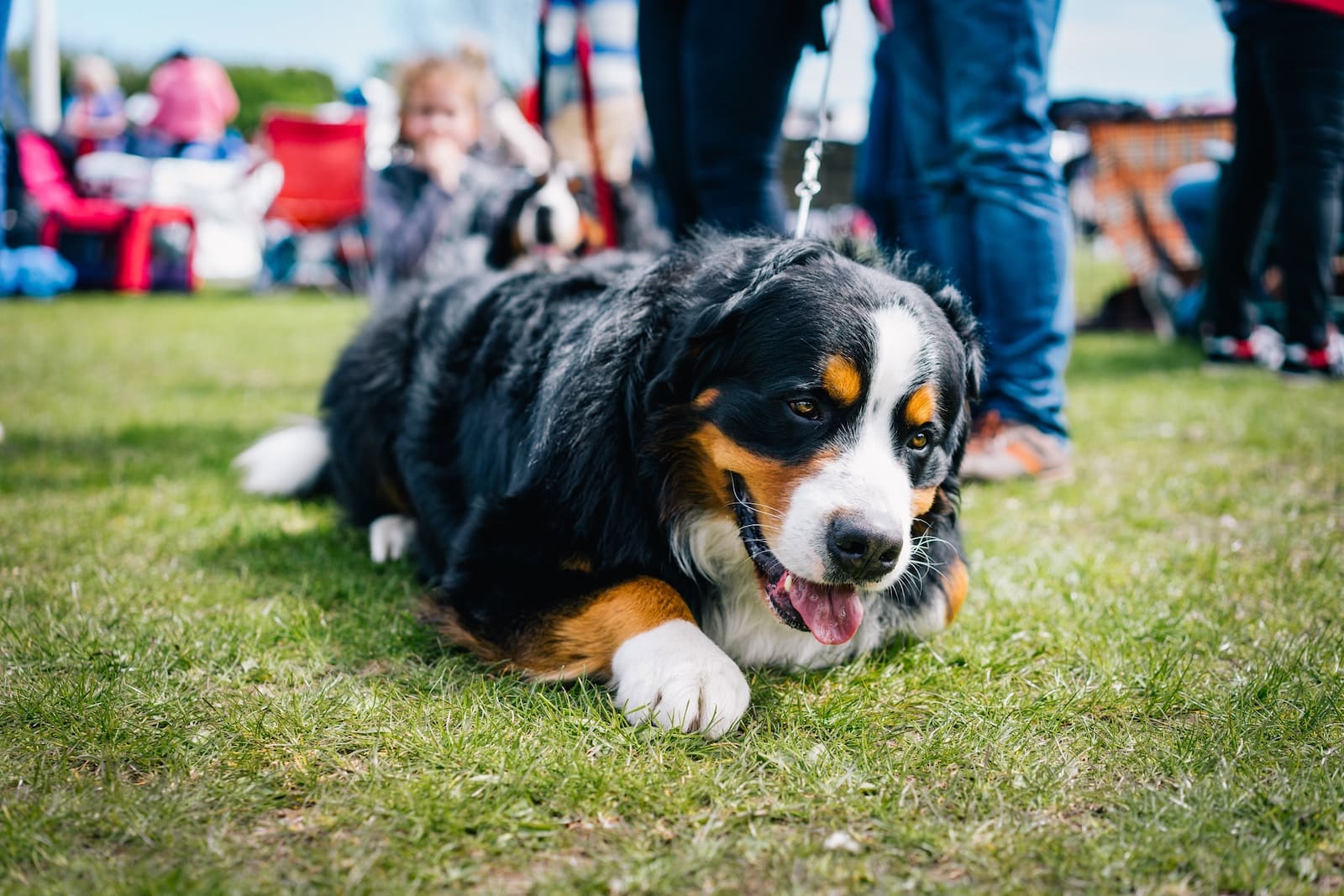
| Origin: | Switzerland |
| Lifespan: | 7–10 years |
| Height: | 23–28 inches |
Similar to Newfoundlands, Bernese Mountain Dogs are pretty large and gentle. They were bred to be livestock guardian dogs and don’t have a strong prey drive. However, socialization is essential. Your puppy should be gradually introduced to the cats if you want them to get along. Otherwise, they may see them as prey animals or intruders.
18. Chihuahua
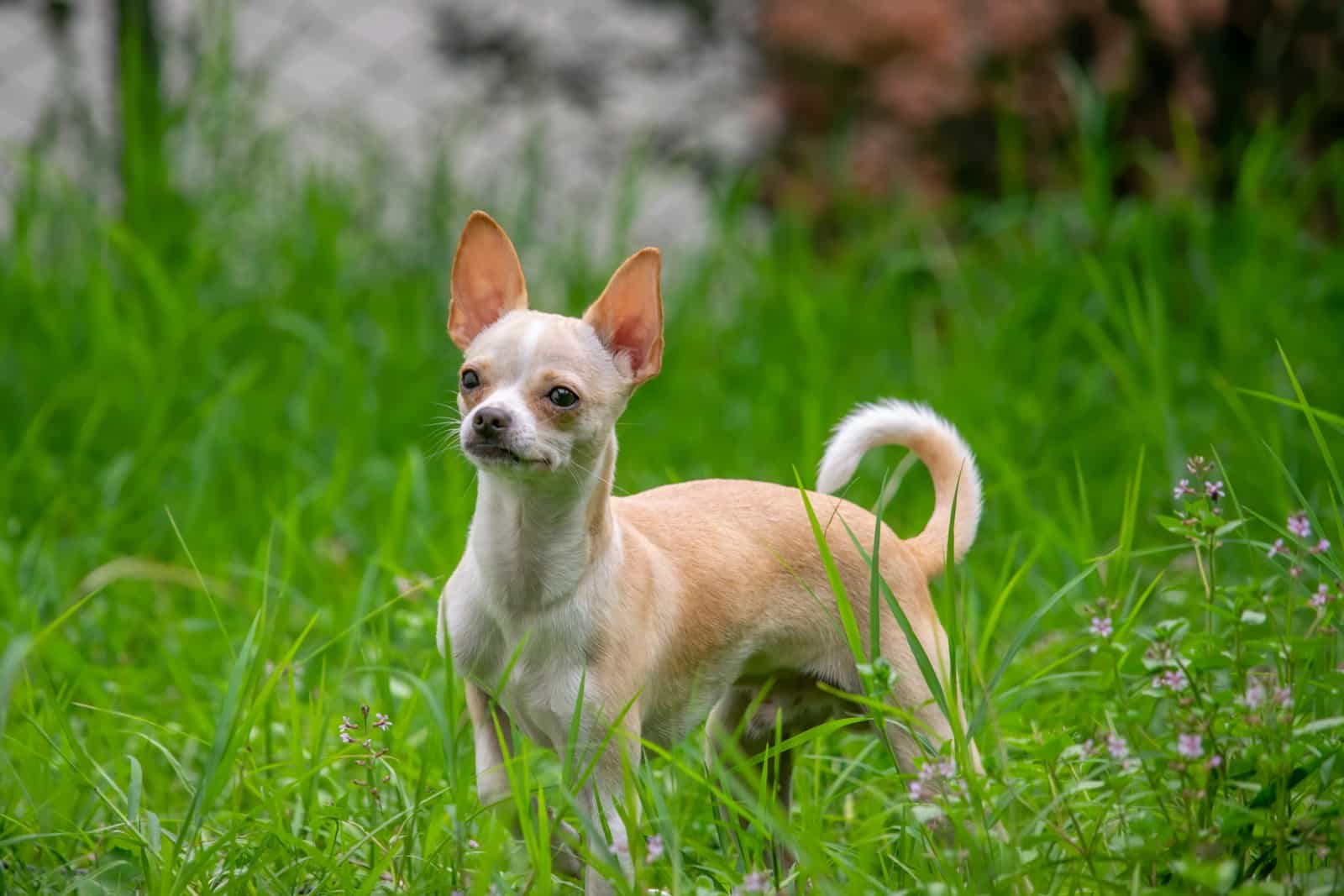
| Origin: | Mexico |
| Lifespan: | 15–20 years |
| Height: | 5–8 inches |
When raised and bred properly, Chihuahuas can be very friendly. They are confident little dogs with outgoing personalities, and their very small size makes them suitable for most cats. You’ll often be worried about the cat hurting the Chihuahua, not the other way around. A Chihuahua can be a safe addition to your household if you have a friendly cat.
However, Chihuahuas must be raised and trained well. Otherwise, they can be anxious and fearful. This fearfulness can make them snappy and aggressive with people and cats.
19. English Cocker Spaniel
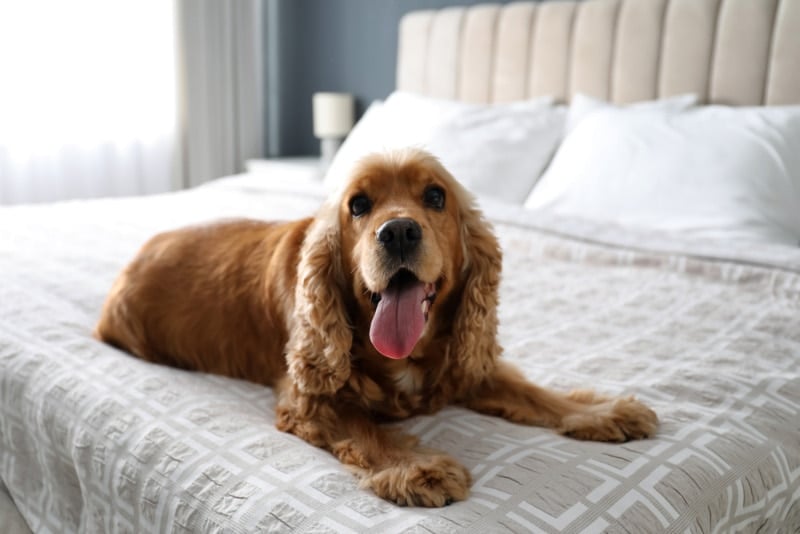
| Origin: | England |
| Lifespan: | 12–15 years |
| Height: | 14–17 inches |
Spaniels may be hunting dogs, but English Cocker Spaniels are surprisingly good with cats when adequately socialized. They are playful and gentle and get along with practically everyone. They’re pretty adaptable dogs and easy to train. Therefore, they are a good choice for inexperienced dog owners and families.
20. Border Terrier
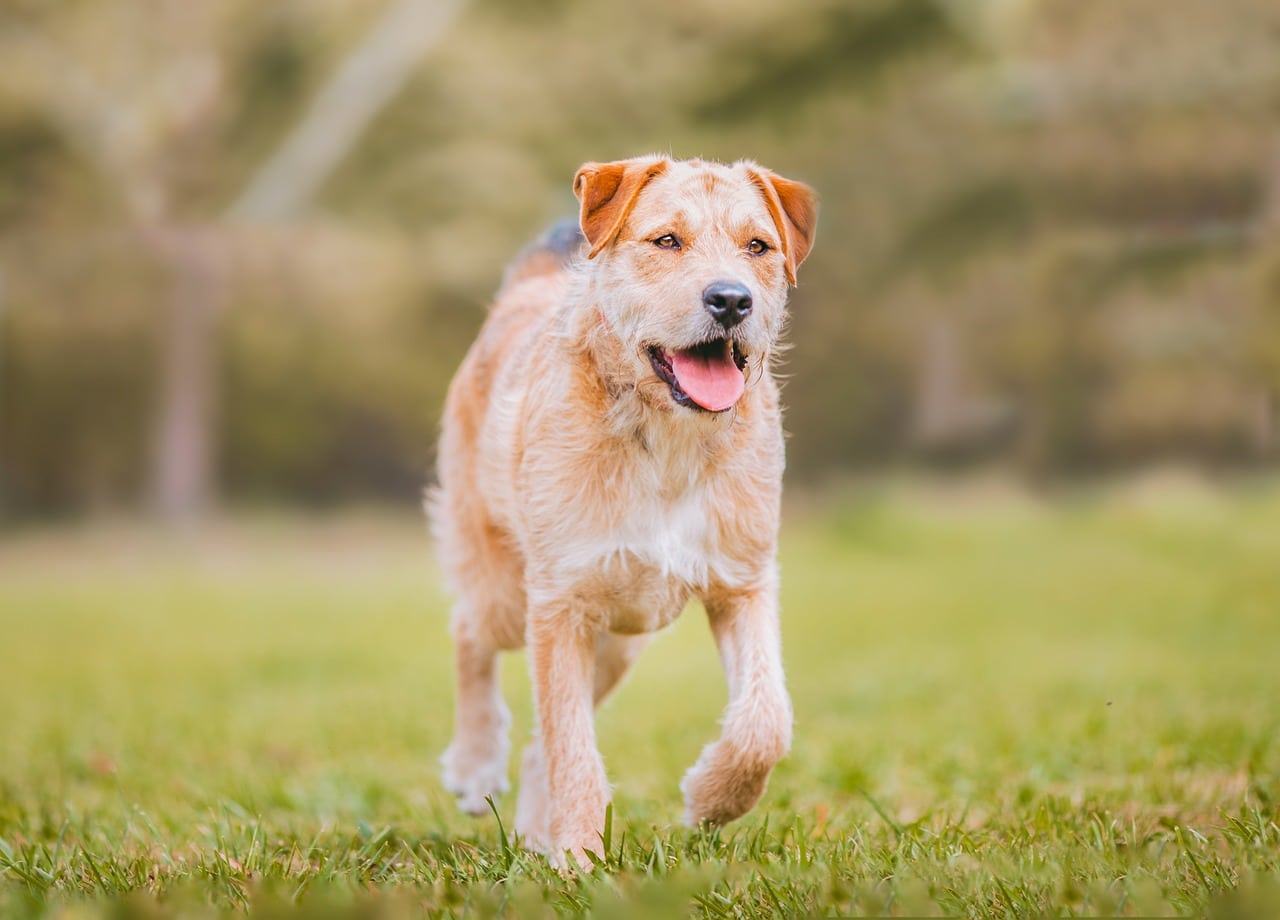
| Origin: | Scotland |
| Lifespan: | 12–14 years |
| Height: | 14–16 inches |
Border Terriers are one of the rarer dogs on this list. Since they’re smaller Terriers, they get along better with cats than larger, more intimidating dogs. Cats are more likely to accept them when properly socialized and introduced.
Although Border Terriers need plenty of daily exercise, they are very low-maintenance pets. Their coats pretty much take care of themselves, so their grooming needs are low. However, they can be noisy sometimes, so they aren’t a good choice for those in apartments.

Final Thoughts
While not all dog breeds readily get along with cats, some are likelier to become friends. Of course, temperaments can vary from dog to dog. Just because a breed as a whole tends to get along with cats doesn’t mean all dogs within the breed will. Socialization plays a big role in whether or not a dog will get along with cats. If a dog grows up around friendly cats, they’re much less likely to see them as prey animals. Similarly, if a cat grows up around dogs, they’re less likely to be fearful of them.
You want both parties to be confident and socialized. It only takes one to upset the balance.
Featured Image Credit: Chendongshan, Shutterstock
